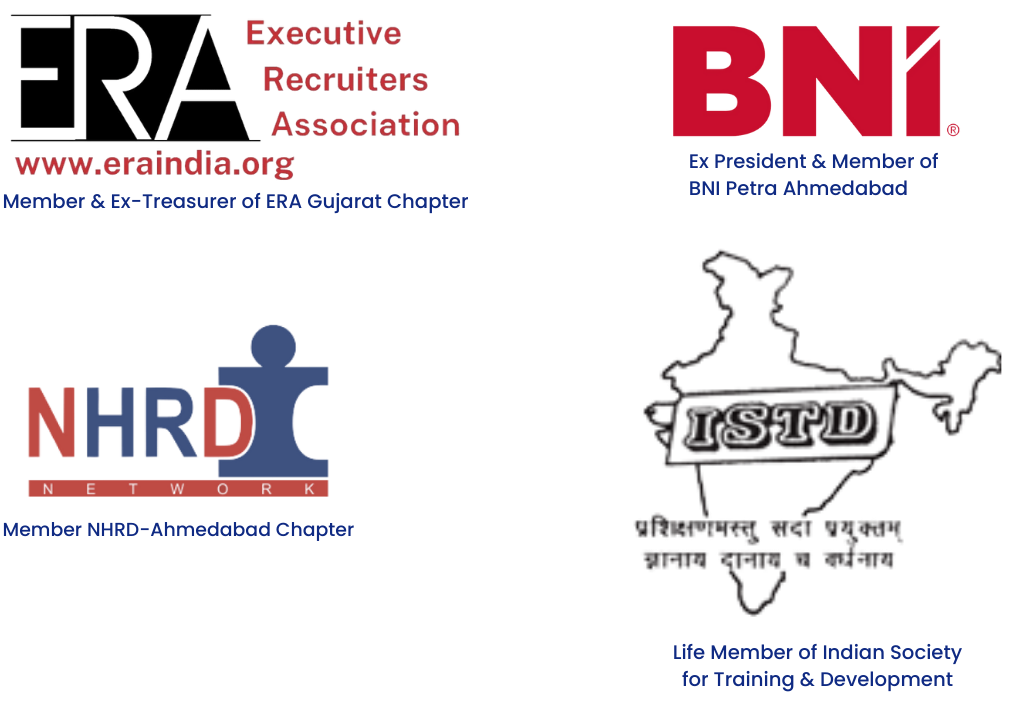Why tech hiring feels harder (and what to do about it)
Roles keep evolving, AI fluency is showing up in every JD, and great candidates have options. The solution isn’t more interviews—it’s clear roles, fair assessments, and faster decisions. The three moves that consistently work:
- Structured interviews (same questions + shared scorecards) improve fairness and prediction.
- Skills-based hiring (work samples, job simulations, portfolio/code review) surfaces real ability.
- Deliberate candidate experience (clear briefs, fast feedback) lifts acceptance and long-term engagement.
Below is a practical playbook you can run with your team—or alongside a trusted Recruitment Agency in Ahmedabad.
1) Define success before you write the JD
What to do
- Write a 30/60/90-day success profile (3–5 outcomes at each milestone).
- Convert outcomes into must-have skills (critical today) and nice-to-have (useful later).
- Keep the JD short. Describe the mission, the outcomes, and the stack—not a laundry list.
Example success profile (SDE-II, platform team)
- Day 30: Understand architecture; own a small reliability ticket; ship 1 PR/week.
- Day 60: Lead a service hardening task; drive incident post-mortem; reduce noisy alerts by 20%.
- Day 90: Own on-call block; mentor a junior; land a performance win (p95 latency −15%).
Why it works
Clear success metrics cut noise, reduce interview loops, and help your It Placement Consultant in Ahmedabad target the right talent—fast.
2) Make your funnel skills-first
What to do
- Replace generic tests with role-relevant work samples
- Backend: design a simple API + rate limiter.
- Data: build a tiny pipeline + quality checks.
- Mobile: implement a screen + offline cache.
- Use structured interviews with a shared 1–5 scorecard for: problem-solving, code quality, systems thinking, collaboration.
- Keep technical screens 60–90 minutes; skip puzzles/brainteasers that don’t map to the job.
Why it works
Skills-based + structured methods are fairer and more predictive than unstructured conversations.
3) Cut time-to-offer without cutting quality
What to do
- Cap most processes at 2–3 conversations (tech → behavioral/team → wrap/offer).
- Block interviewer calendars up-front to avoid gaps.
- Share compensation range early; pre-clear approvals.
A simple timeline
- Day 0–2: Intake, JD, launch sourcing.
- Day 3–7: Tech screen + scorecard.
- Day 8–10: Team/behavioral + decision huddle.
- Day 11–12: Verbal + written offer; pre-boarding starts.
Why it works
Speed + transparency raise acceptance and reduce drop-offs.
4) Hire for today’s stack and tomorrow’s change
What to do
- Test adaptability: “Tell us about a migration you led. What changed? What broke? What did you learn?”
- Check AI-literacy: “Show how you’d use AI tools to write tests, generate docs, or troubleshoot.”
- Weigh team impact: code reviews, hygiene, on-call maturity, and how candidates raise the bar.
What to look for
- Real examples, trade-offs explained, and measurable outcomes (latency, MTTR, cost, reliability).
5) Build two pipelines: immediate & evergreen
What to do
- Immediate roles: targeted outreach, referrals, alumni, community groups, meetups.
- Evergreen roles (SDE-II, data engineer, cloud/SRE): maintain a rolling bench with your It Manpower consultancy in Ahmedabad to hire in weeks, not months.
- Project spikes: use Manpower Staffing Services in Ahmedabad to add short-term capacity for migrations, go-lives, and seasonality—without bloating permanent headcount.
Why it works
Parallel pipelines protect delivery dates and budgets when demand surges.
6) Design candidate experience like a product
What to do
- Send a one-page brief before interviews: team charter, role context, interview plan, timeline.
- Offer a choice (where practical) between take-home vs live
- Give same-day feedback and clear next steps; close the loop even for “no” outcomes.
Why it works
Candidates who feel respected and informed are far more likely to say “yes,” recommend you, or re-engage later.
7) Win the offer-to-join window
What to do
- Share a growth note: mentoring, learning budget, first-90-day goals.
- Introduce peers + a buddy; schedule a light pre-start sync.
- Keep weekly touchpoints; make Day-1 productive (access, laptop, repositories, roadmap).
Why it works
Pre-boarding reduces counter-offer risk and accelerates ramp once they join.
8) What to measure (your leadership dashboard)
- Time-to-Offer: post-intake → verbal offer. Track by role family.
- Offer Acceptance Rate: accepted ÷ total offers (target >80%).
- Quality-of-Hire: % of 30/60/90 outcomes achieved; link to manager reviews.
- Interview Efficiency: interviews-per-hire, decision SLAs, scorecard completion rate.
- Candidate Experience: brief-sent %, feedback speed, simple NPS (“Would you recommend our process?”).
Set quarterly targets, review monthly, and adjust your process based on signal.
9) Common pitfalls (and quick fixes)
- JD as a wish list: Re-write around 30/60/90 outcomes; cut anything not tied to them.
- Endless loops: Fix your panel; schedule back-to-back; decide in 24 hours.
- Generic screens: Swap for role-relevant work; standardize scorecards.
- Late comp talk: Align ranges early to avoid last-minute surprises.
- Ghosting: Automate status updates; always send a closure note.
10) Ready-to-copy artifacts
Scorecard (1–5)
- Problem-solving | Systems thinking | Code quality | Collaboration | Ownership
Behavioral prompts
- “Tell us about a production incident you handled.”
- “When you disagreed on design, how did you decide?”
- “Show a time you improved performance or cost. What changed?”
One-page candidate brief (outline)
- Team mission & how the role contributes
- Architecture snapshot / product context
- Interview plan + decision timeline
- Tools/stack + on-call expectations
How RKHRM helps you execute (fast, simple, predictable)
RK HR Management (RKHRM) can run the full playbook with you—or plug into the steps you need most:
- Role deconstruction & success profiles (clear outcomes before the JD)
- Skills-based assessments and structured interview kits tailored to each role
- Curated pipelines of passive tech talent (product, data, cloud, security)
- Offer-to-join orchestration and pre-boarding routines that lift acceptance
- Project capacity via Manpower Staffing Services in Ahmedabad for migrations, go-lives, and peaks
We act as your on-ground Recruitment Agency in Ahmedabad and your trusted It Placement Consultant in Ahmedabad—so you can hire for today and build for tomorrow.
Industries we serve (tech roles across functions)
- Product & SaaS: feature teams, platforms, reliability, security
- BFSI & Fintech: integrations, risk analytics, cybersecurity, core systems
- Manufacturing & Industrial Tech: ERP/MES, OT-IT, data COEs, automation
- Healthcare & Life Sciences: interoperability, privacy, compliance, data
- Retail & D2C: martech, personalization, search, last-mile, supply chain
Contact RK HR Management (RKHRM)
Address: H-1010, 1011 & E-208, Titanium City Center, 100 Feet Anand Nagar Road, Near Sachin Tower, Satellite, Ahmedabad, Gujarat 380015
Client Inquiries: +91 84606 62200 | +91 90330 66011 • Hours: 9:30 AM – 6:30 PM (Mon–Sat)
Website: rkhrm.com











